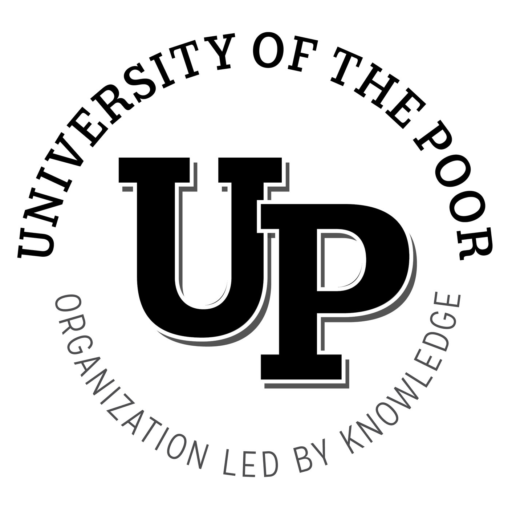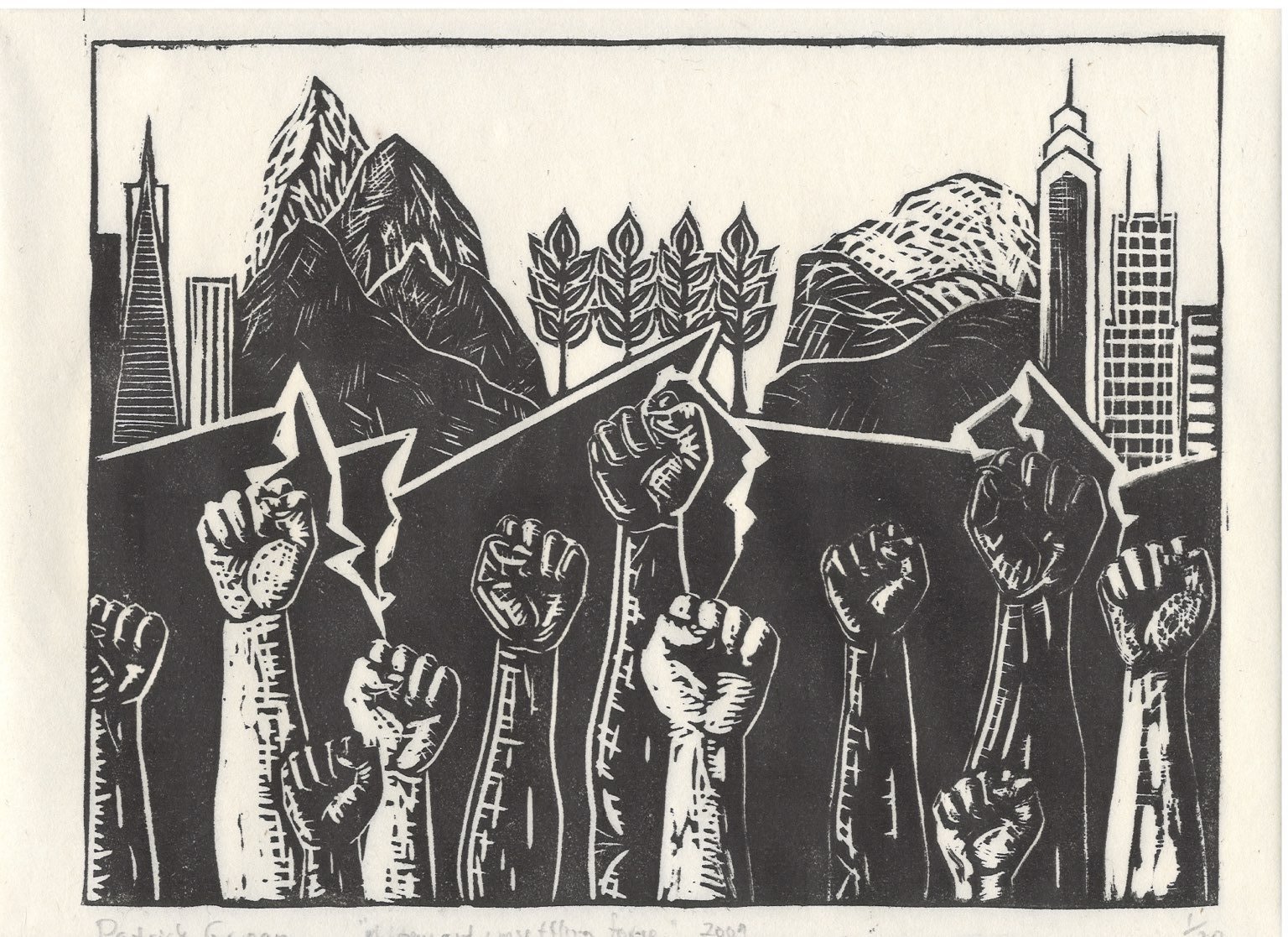By Willie Baptist and Kristin Colangelo
Political tactics or forms of struggle and organization of the working-class arise spontaneously from particular economic, social, and political conditions. They are not invented by so-called “leaders” in secluded studies.
In Russia, the Soviets (or councils) of workers, peasants, and soldiers initially arose out of the concrete conditions of the 1905 Russian revolution. The Bolshevik revolutionary leaders took note of them and politically promoted their development up to the October 1917 revolution and the establishment of the Union of Soviet Socialist Republics. More close to home is the example of the most influential moments of the 1980s-90s organizing drives of the National Union of the Homeless, when their struggles assumed the dramatic form of a “mass illegal housing takeover movement.” These protests and organizing drives only generalized and synchronized the desperate acts homeless individuals and groupings throughout the country were already compelled to take to survive.
The key lesson here is that political organizers and tacticians must maintain close, organic connections to the emerging struggles of the poor and dispossessed. In this way, they are able to stay attentive to these struggles in such a way as to generalize and connect them through a wider political strategy.
Another example from our history were the urban African-American ghetto conditions created as a result of the invention of the mechanical cotton picker, which could outpick 50 sharecroppers. The large-scale employment of this technology led to the massive out-migration of both blacks and whites from the Southern rural areas to cities in both the South and North. Long established racist institutions and policies concentrated poor blacks in Jim Crow segregated ghettos in the bigger cities, whereas at the same time poor white migrants were more dispersed. Bus boycotts successfully carried out by the black masses in Montgomery, Alabama were made possible because of developments that concentrated them in larger communities with larger social institutions, such as black churches. Neither the tactic of the Montgomery Bus Boycott nor the Civil Rights Movement as a whole could have been possible and successful under conditions of a dispersed population on cotton plantations before the advent of the mechanization of the harvesting of cotton.
The operations of extra-legal groups like the Ku Klux Klan were useful against dispersed and isolated black families on rural plantations. However, in dealing with a mass of black families concentrated in larger urban ghetto communities, the powers that be could only maintain control over this mass with police departments made up of larger standing armed forces. In the mid to late 1960’s, the United States and world, however, witnessed a social explosion of mass ghetto uprisings in hundreds of major cities. The impoverished black southern migrants who were racially segregated in ghettos largely fought in these uprisings. The mass out-breaks of militant protests were caused by economically deprived living conditions, with black youths experiencing unemployment as high as 50-60%, and in most cases they were triggered by the repressive and repeated terror of police harassment and brutality. The Watts Uprising of August 1965 inaugurated the successive rounds of mass uprisings in the black ghettos of the Northern big cities throughout the latter half of the 1960’s. These rebellions were described as the largest violent mass upheavals since the US Civil War.
Tens of thousands of men, women, and youth took to the streets of Watts, California in mass and violent protests. These uprisings assumed different tactical forms of protest and organization – mass violations of bourgeois property laws with widespread looting and the taking of basic necessities like bread, milk, and baby diapers; “Burn-Baby-Burn” operations bringing down whole building structures that were left looking like bombed out city blocks; waging of street battles against the police, including traveling community patrols, ‘fisticuffs”, and sniper fire, etc. A number of significant forms of organization arose out of these uprisings, which included groupings like the Aid to Needy Children (ANC) Mothers of Watts, the National Welfare Rights Organization, the Nation of Islam, the Black Panther Party, the League of the Revolutionary Black Workers, and the 1968 Poor People’s Campaign.
The powers that be and their political strategists, intelligence agencies, and the Pentagon have intensively studied the lessons from this and other periods in history of urban uprisings and other forms of mass protest. The tactical countermeasures taken in response to the 1960’s uprisings were more or less successfully carried out under the favorable conditions of an expanding capitalist economy, along with an expanding national Keynesian welfare state. The resources supplied by these conditions were used to ultimately quell and defeat the rebellions and to misdirect, co-opt, and destroy resisting organizations.
Similar measures were taken earlier to control, limit, and subordinate the objectives of the Civil Rights Movement to the ruling class interests of Wall Street and the upper strata and upper class of blacks. The success of the co-opted direction of the Civil Rights Movement lay in the fact that the lower economic class of blacks continued to live in the hell of the segregated ghettos and were forced into open combat with the violent US state apparatuses.
Unlike previous economic periods of technological revolutions, the current one is colliding with and undermining the very foundations of the globalized capitalist economic system. This is turning an expanding economy into a contracting one, which is necessitating the ruling capitalist class’s dismantling of the welfare state. These developments are being manifested in the growth of unemployment and underemployment with poverty wages. The developed capitalist countries have not escaped these developments. For example, the poor and, increasingly, the middle income strata of the United States are experiencing water cutoffs and water poisoning, cuts in welfare checks, food stamps, Medicaid, and more.
What particularly worries the U.S. government is that today they no longer have the social and economic means they once had to contain one of the most threatening aspects of the 1960’s ghetto rebellions; the class impulses of certain elements of poor white folks to gravitate toward support of the anti-police and anti-poverty uprisings of their poor black brothers and sisters. This impulse was shown by poor white mothers of South Gates, an adjacent neighborhood to Watts, who collected and brought baskets of food relief to the black mothers and their children at the police cordoned off boundary of the two neighborhoods. Some white workers in San Pedro, California bravely did the same thing. This display of the beginnings of the “unity of the bottom” was taken a step further by the fact that among the arrested snipers targeting the police during the Detroit uprising were a number of white workers. This of course is the greatest threat to the ruling classes in U.S. history. It may be no surprise then that these class overtures were not given any major media coverage at the time.
It was in the economic interests of Wall Street to have Watts and the other ghetto uprisings portrayed simply as so-called “Black Riots.” It was in their interests to have these mass rebellions “racialized” to cover up the class realities of the black ghettos and the society at large. So the political strategists and ideologists of the ruling class utilized the corporate media and the different President Commissions set up to “study the civil disorders” to carry out this “Black Psyop” or misinformation operation. For instance, the “findings” of the infamous Kerner Commission concluded, “Our nation is moving toward two societies, one black, one white—separate and unequal.” In other words, the “findings” concluded that the so-called “riots” were the result simply of racism and had nothing to do with the economic class realities of the United States. Thus, the Kerner Report had to obscure or deemphasize the fact that a black section of the dispossessed or property-less class was in open combat against the U.S. state, with elements of white workers coming to their aid.
Today, the spirit of the Watts and Detroit uprisings, and the conditions that gave rise to them, are no longer confined to the black ghettos. The growth of white slum areas, the excruciating burdens of the brown barrios, red reservations, and other impoverished communities are all now becoming battlefields of increasing resistance. Plus in the past there was no Internet or social media. Now there is and the world is forever changed. The mass protests after the police lynching of George Floyd reached international dimensions after a 17 year old black woman recorded it on her phone.
Currently, we are living in explosive times defined by deepening and intensifying class antagonisms that have become globalized. As already mentioned, these new times are being conditioned by a polarization between the unprecedented extreme concentration of capital and wealth on one side, and on the other side, the exponential growth of impoverishment throughout the planet. This new impoverishment is now engulfing increasing sections of the middle-income strata worldwide. Now more than ever, the ruling classes are worried because they no longer have at their disposal the forces and resources of an ever expanding economy and the controlling political influence of a robust welfare state to socially bribe and put down the arising global instability and social unrest.
Presently, the deteriorating economic and social conditions are creating a very explosive political situation that is touching off mass outbreaks and persistent protests. These conditions and the mass resistance to them promise to be prolonged. However, unlike the past period, they are now globalized, interconnected, and interneted. “A world in disarray” is what Richard Haass, President of the Wall Street backed Council on Foreign Relations, is calling the situation today. In his estimation, this disarray includes the growing economic and political crises in the United States itself. All the leading political analysts, strategists, and counterinsurgency experts of the powers that be are taking into account this worrisome situation of growing global instability.
The struggles of the poor and dispossessed worldwide are erupting under the same and interconnected globalized economic and social conditions. This includes the fact that, in one way or another, all the emerging struggles domestically and internationally are commonly being confronted by the globally distributed military bases and the omnipresence of the world’s largest intelligence services of the U.S. The American government’s military budget alone amounts to the military budgets of all the major countries combined. The U.S. state apparatus remains what the Rev. Dr. Martin Luther King appraised as “the greatest purveyor of violence” in the world. Consequently, none of these struggles should be seen in isolation.
We must understand the interconnections of the recent and massive protests in Chile and Port-au-Prince, Haiti; the Yellow Vests movement in France, the MST (Movement of Landless Workers) and the urban poor movements in Brazil, Abahlali (Shackdwellers) and NUMSA (National Union of Metal Workers) in South Africa; the continuing turmoil in Greece and the Middle East, the Arab Spring, the Occupy Wall Street protests in the United States and the occupy movements in London, England, Sao Paulo, and other major cities around the world; the Standing Rock encampment of Native Americans, the mass marches and resistance against the killings and brutalities at the hands of local police in Ferguson, Missouri, Baltimore, Maryland, Minneapolis, Minnesota, London, Berlin, and elsewhere; the spreading homeless encampment fights and housing takeovers; and more. Given the systemic and chronic nature of the current economic and social crises, we should expect and prepare for these struggles to be prolonged.
Of strategic importance to us in the United States are the George Floyd anti-police marches and rallies, the ongoing struggles against water cutoffs and poisoning centered in Detroit and Flint, Michigan, the healthcare as a human right campaigns in Vermont and Pennsylvania, the Homeless Union national organizing drive, the struggles against deportation of poor immigrants, and the continuing activities of the Poor People’s Campaign.

